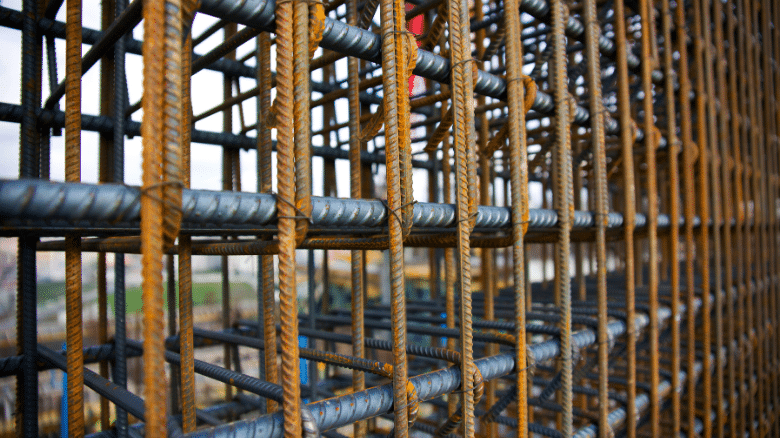Introduction:
From towering skyscrapers in cities like London and New York to lesser-known infrastructure projects around the world, steel is the material that has enabled us to build strong, long-lasting structures. At Build on Infra, we recognize the power of steel, and the role it plays in constructing some of the most iconic buildings and infrastructure projects from Hyderabad to the world. In this blog post, we explore the ways in which steel and technology have helped shape our skyline and infrastructure around the globe.
Contrasting Steel with Other Traditional Building Materials:
Steel has long been the material of choice for many of the largest, most innovative building projects over the last century. Its incredible strength and durability make it a far superior material to traditional building materials such as wood and stone, that lack the same motives to stability. The weight and fortitude of steel makes it the perfect choice for skyscrapers and other large infrastructure projects; its malleability allows for versatile design and, ultimately, timeless architecture. Put simply, steel remains the go-to material for structural integrity.
Steel in Modern Skyscraper Design:
1.Steel as a Structural Frame:
Steel is one of the most widely used building materials due to its strength and versatility. It is the backbone of modern construction, providing essential support for many of the structures that shape our skylines and make up our infrastructure. Steel is an exceedingly strong material, allowing it to provide structural frames for the tallest, highest and most daring of buildings – from skyscrapers to bridges and beyond. As a result, it has become an indispensable element of the construction process, providing a powerful platform for structures that would be impossible using traditional materials. Steel's ability to construct futuristic buildings and infrastructure allows it to influence the shape of our modern cities.
2.Steel’s Durability and Strength:
Steel possesses a number of traits that make it the ideal material for use in skyscrapers and infrastructure. Firstly, it is a strong and durable material. Steel has substantial tensile strength, the ability of a material to resist forces that attempt to stretch it, making it highly suitable for building bridges, offshore structures, and other big infrastructure projects that come up against aggressive environmental forces. Steel also has a high resistance to erosion and weathering that make it ideal for long-term outdoor structures - for example, those found in mountainous terrain or exposed to harsh coastal climates. Moreover, steel's strength and durability are essential for creating tall and powerful skyscrapers. The classic skyscrapers found across cities such as New York, Tokyo, and London rely on steel's sturdy nature to maintain their shape and resist the powerful gusts up at their greatest heights.
Steel’s Versatility:
1.Lightweight Construction:
The use of steel in lightweight construction is one of the most important benefits that modern steel contributes to the construction of skyscrapers and other modern infrastructure. Steel is the most popular choice for lightweight construction due to its excellent strength and weight ratios. This allows steel to be used to construct large spans without having to add extra support along the way, resulting in lighter and stronger structures than other construction materials. Lightweight construction with steel is also more cost effective than traditional construction techniques, making it an attractive option for engineers and builders alike.
2.Ability to Incorporate Large Amounts of Glass:
The remarkable strength and durability of steel has revolutionized modern architecture, particularly in terms of its ability to incorporate large amounts of glass. Only steel components provide the requisite safety standards required for this feat, and have enabled architects to design edifices that blend industrial elements with a light ethereal aesthetic. Current innovations in steel technology have also enabled more intricate and intricate patterns to be incorporated into windows and walls, further integrating industrial materials into public spaces – all while making sure they remain safe and structurally sound for generations to come.
Steel’s Environmental Benefits:
1.Steel’s Reduced Carbon Footprint:
Steel is one of the most recyclable materials in existence and as such, its use in construction and infrastructure projects can have long-term benefits to our environment. Steel is a low-carbon material, meaning it requires less energy in production and transport. Furthermore, it leaves behind a much smaller carbon footprint than other materials like concrete, with the US Department of Energy stating that the use of steel in buildings produces 7 times fewer carbon dioxide emissions than brick. Steel’s impressive environmental credentials are just one of the reasons why it continues to be chosen as a primary material choice across multiple sectors and its part in creating a more sustainable future should not be overlooked.
2.Benefits of Recycling Steel:
Steel is a material used widely in modern architectural and infrastructure projects. As such, it is of huge importance to ensure that it is recycled responsibly. There are a myriad of benefits associated with recycling steel, both economic and environmental. Economically, it cuts down on the need to use new raw materials, thus reducing costs for the entire production process. In addition, recycling steel produces less air pollution, waste and water pollution than producing steel from scratch. This has the added benefit of helping to reduce greenhouse emissions and mitigating the negative effects of climate change. The recycling process also helps to create jobs and contribute to local economies. Ultimately, recycling steel is essential in order to sustain the environment and secure a sustainable future for generations to come.
Conclusion:
To conclude, steel is the foundation of any strong building infrastructure, and it is essential that we use the best building construction material suppliers in Hyderabad to ensure that our skyscrapers and infrastructure remain safe and secure. Steel provides the strength and durability that we need to effectively build and construct buildings that will stand the test of time. With the right supplier, we have the power to build the structures of tomorrow that will meet the demands of today's society.

